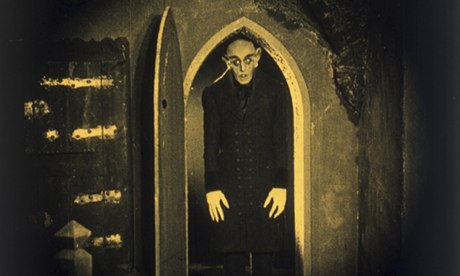FW Murnau's black-and-white silent vampire movie from 1922 is now revived nationally as part of the BFI Southbank Gothic season. This romantic fantasia of evil helped invent a whole vocabulary of thriller storytelling; Hitchcock put it to use for the rest of his life in tales of superficially respectable men who were predatory killers. The lunatic in his cell in Nosferatu, fanatically noticing insects, eventually morphed into Anthony Perkins in Psycho.
Murnau shifted the geographical centre of gravity east in his unauthorised adaptation of Bram Stoker's Dracula: now it is Germany, not England, where the sinister Count Orlok, that strange fanged sprite played by Max Schreck, aspires to live. Having been quarantined for so long in the trackless Translyvanian forests, he has now made a satanic decision to spread his malaise into the rational, scientific, bourgeois Europe of the 19th century. The forces of good can hold on to one hope: he can be killed by the sunrise (and Sunrise was the title of Murnau's humanist masterpiece released in 1927 – the polar opposite of this film). I can never see the eerie shots of the count's ruined German house without thinking of newsreels of 1945 Berlin. There is pure expressionist inspiration in Murnau's juxtaposition of the malign wolves and the terrified old women: a poetry of fear.











